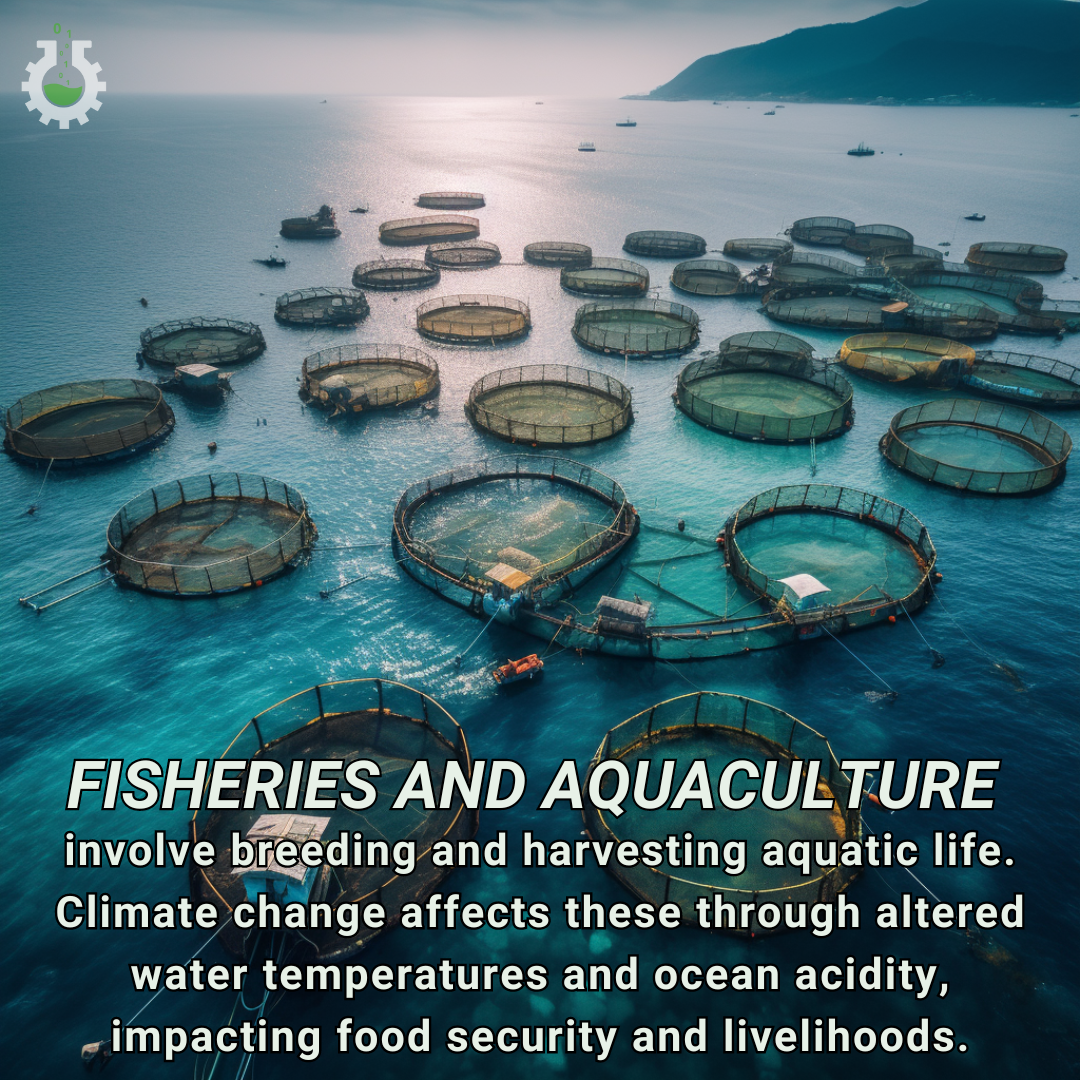July 15, 2024
Climate Change Poster Collection of the Day – Fisheries and Aquaculture
Book a Demo
Today’s Climate Change Poster Collection highlights Fisheries and aquaculture, essential components of global food systems and economies. Fisheries refer to the harvesting of fish and other aquatic organisms from natural habitats such as oceans, rivers, and lakes, while aquaculture, also known as fish farming, involves the breeding, rearing, and harvesting of fish, shellfish, and aquatic plants in controlled environments. These sectors provide a significant source of protein and livelihood for millions of people worldwide. However, the intricate relationship between fisheries, aquaculture, and climate change is a critical yet often underexplored area of environmental science. Climate change exerts profound impacts on marine and freshwater ecosystems, which directly affect fisheries and aquaculture.
Rising sea temperatures lead to shifts in the distribution and abundance of fish species, as many marine organisms are highly sensitive to temperature changes. This can result in the migration of fish stocks to cooler waters, disrupting traditional fishing grounds and economies that depend on them. For instance, fish species that once thrived in tropical waters may move towards the poles, leaving local fishermen struggling to find adequate catches. Ocean acidification, driven by increased atmospheric CO2 absorption, compromises the health of calcifying organisms such as shellfish and corals, which are foundational to marine food webs. Acidified waters impede the ability of these organisms to form shells and skeletons, leading to reduced populations and affecting the species that rely on them for food and habitat.
Additionally, changes in precipitation patterns and the frequency of extreme weather events can alter freshwater habitats, affecting inland aquaculture operations. Increased rainfall and flooding can lead to the dilution of salinity in coastal aquaculture farms, impacting species that require specific salinity levels to thrive. Conversely, droughts can reduce water availability, stressing both wild fish populations and aquaculture systems. The increased frequency and intensity of storms can also damage aquaculture infrastructure, leading to significant economic losses. For example, hurricanes and typhoons can destroy fish pens and cages, resulting in the escape of farmed species and the loss of livelihoods for aquaculture farmers.
Furthermore, the proliferation of harmful algal blooms, exacerbated by warming waters, poses a threat to both wild fisheries and farmed species by producing toxins that can contaminate seafood and devastate aquatic life. These blooms can cause massive die-offs of fish and shellfish, leading to economic hardships for communities dependent on these resources. As fish and other marine organisms are integral to global food security, especially in developing countries, these climate-induced changes threaten the livelihoods of millions of people and the nutritional needs of billions.
Addressing these challenges requires adaptive management strategies that incorporate climate predictions, enhance ecosystem resilience, and promote sustainable practices in both fisheries and aquaculture. This includes measures such as developing climate-resilient aquaculture species, improving water management practices, and implementing marine protected areas to safeguard critical habitats. By understanding and mitigating the impacts of climate change on these sectors, we can better safeguard marine biodiversity and ensure the continued provision of vital resources for human populations. Investing in research and innovation, along with international cooperation, is essential to build resilient fisheries and aquaculture systems that can withstand the pressures of a changing climate.
Discover an inspiring collection of climate change poster.



